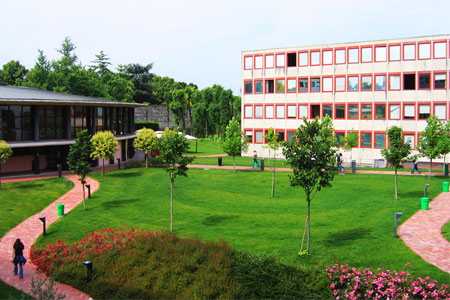Course not running

Lesson timetable
Go to lesson schedule
Learning outcomes
The course aims at providing students with competences and knowledge to understand and analyze contemporary English in its complexity and plurality, starting from the perspective of sociolinguistics. On completion of the course students will acquire knowledge of the phenomena that have led to a diversification of the English language into Global Englishes and English as Lingua franca. They will be able to identify and analyze with a critical approach the features, functions and implications of Global Englishes and English as a Lingua Franca, also for English Language Teaching (ELT). Students will also achieve linguistic proficiency in English corresponding to the C2 level - Common European Framework of Reference for languages.
Syllabus
SYLLABUS
The course will be delivered in English, and will deal with the following topics:
- English as a global language
- Models of categorization
- ‘new’ and ‘New’ Englishes; English-based pidgins and creoles
- English in Europe and East Asia – emerging Englishes
- Types of variation across Englishes – language variation and language contact
- Standard language ideologies
- English as a Lingua Franca
- Implications of Global Englishes and ELF for Teaching English as a Foreign Language (EFL): materials, practices, fostering intercultural communication
The course will be delivered through lessons; students will be asked to carry out reflection activities related to the topics in the syllabus, also in the e-learning dedicated space.
Basic Readings:
Jenkins, Jennifer. 2015. (3rd edition). Global Englishes. London: Routledge.
Schneider, Edgar. 2013. English around the World. Cambridge: Cambridge University Press.
Additional Readings:
Galloway N., Heath R. 2015. Introducing Global Englishes. London: Routledge.
Saraceni, Mario. 2015. World Englishes. A Critical Analysis. London/New York: Bloomsbury.
Further information on relevant literature will be provided during the course.
Reference books
| Author |
Title |
Publisher |
Year |
ISBN |
Note |
| Schneider E. |
English Around the World
|
Cambridge University Press |
2011
|
|
|
| Jenkins J |
Global Englishes
(Edizione 3)
|
Routledge |
2014
|
|
|
| Galloway, N. and Rose, H. |
Introducing Global English
|
Routledge |
2015
|
978-0-415-83531-2 |
|
| Saraceni M. |
World Englishes. A Critical Analysis
|
Bloomsbury |
2015
|
|
|
Assessment methods and criteria
Contents of the exam: students will be examined on the topics listed in the syllabus.
Type of exam and exam objectives: The exam is oral, and aims at evaluating students’:
knowledge of the topics included in the programme
critical understanding of the issues examined during the course
ability to contextualize and apply this knowledge and understanding to examples of
language use
Evaluation: The final mark (/out of 30) will derive from the evaluation of the course contents (50%) and the CLA C2 language mark (50%).
The Centro Linguistico di Ateneo certificates of language proficiency, as well as the ones by MIUR-accredited certification bodies; the language competence C2 CEFR level (3 CFU) is a pre-requisite for the exam (6 CFU).
Attendance: The contents of the exam are the same for attending and non-attending students. All students will be tested for the same skills (see exam objectives)







